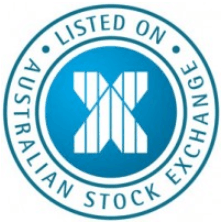
US markets provided Asia with very little to work with and while China and Japan were oblivious to the proceedings in Australia, trade in Australia has been positive, albeit on exceptionally light volume indeed.
Of course that is absolutely no surprise whatsoever, given the Melbourne Cup Carnival getting the lion’s share of attention, although there will besome buying of banks ahead of dividend payments in the coming days. China and Japan found good sellers into midday trade, with Nissan coming out with a downgrade to guidance and Moody’s threatening to cut Sony’s credit rating. The Nikkei needs to see USD/JPY break back into the ¥100-105 range, however this doesn’t seem likely until we get clear signs that the market is singing off the same song sheet as the Fed collective – yet everything is data dependant as a number of Fed members have detailed of late.
Today’s US and UK services ISM will be closely followed, as the recent bout of global manufacturing PMIs (Purchasing Managers’ Index) have generally shown good improvement. While this shows the cyclical parts of the global economy are holding up, the services ISM actually contributes more heavily to growth metrics. A number on the US services ISM below 54.0 could derail the USD recovery, while putting upside risks in gold, as well as the equities of developed and emerging markets.UK services PMI is expected to expand at a slightly slower pace, with the index expected to come in at 60.0.
A number of traders have pointed to the Fed’s Senior Loan Officer Opinion Survey, which is a little concerning given it showed a drop in demand for residential mortgages. Mortgage financing is the area of most concern, and it seems that a number of banks have changed their lending practises as a consequence, with some even reducing their headcount. This is a concern for the Fed and is a USD negative as the Fed really won’t want to see the US ten-year bond back at 3% anytime soon, because they have now seen first-hand evidence of the impact rising mortgage rates have had on housing. Of course we have already seen a reaction in some of the home sales reports, but the impact is now being felt in other parts of the economy and the Fed will be extremely cognisant of yields pushing back above 3% anytime soon. On this metric alone,March seems to be the most appropriate date for tapering as it gives the market enough time to see a change in the employment trend, while perhaps lending enough time to see a modest boost to inflation expectations.
On the forex side, we’ve seen better two-way trade on EUR/USD today, which seems to be in keeping with the exhaustion pattern seen yesterday on the daily chart. There’s a growing buzz around the coming ECB meeting, however the risk of disappointment is high and thus many will be looking to reload EUR/USD shorts closer to 1.3640 if the ECB don’t deliver. EUR/GBP is also getting some attention as traders look at taking the taper trade out of the equation and look at the low beta nature of the pair.
The ASX 200 has outperformed as mentioned, with both the financial and material sectors pushing higher in unison. The index has a good pedigree on Melbourne Cup Day, with traders getting into the spirit of carnival, while support for the banks is rife as traders and investors look to pick up dividend income. It’s also worth remembering that nineteen points come out of the index due to dividend payments on Thursday.
The RBA left rates on hold and given the market was putting a 2% probability of a cut, this won’t surprise anyone given the recent inflation and retail sales data, while business and consumer confidence has improved as well. With China ticking along without issue and iron ore back above $135 per ton there is no reason to cut right now.
The statement itself from the RBA was extremely neutral and in-line with the aforementioned data points. The reaction in the AUD/USD however (the pair dropped from 0.9502 to 0.9468) was in my opinion premised purely on the second to last paragraph, with the RBA saying ‘the Australian dollar, while below its level earlier in the year, is still uncomfortably high. A lower level of the exchange rate is likely to be needed to achieve balanced growth in the economy’. This is a more dovish change from the October 1 statement and very much in line with Glenn Stevens’ speech last week. Still, do we really think the RBA is going to do anything about the strength in the AUD? For me at the very most it will curb them from raising rates, but they are not going to cut rates given the current fundamentals at play. The RBA will be on hold for many months to come it seems and they will (more than ever) be hoping the Fed comes to the party to taper its bond purchases sooner rather than later, although we could say the same about the BoJ and ECB as well.
Its interesting to look at the swaps market, which is now pricing in twenty basis points of hikes over the coming twelve months. This has moved from pricing in ten basis points yesterday and is effectively the most hawkish the market has been since June 2011.